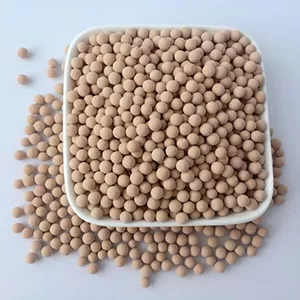3A molecular sieve exhibits a high water adsorption capacity, typically 20–25% by weight under optimal conditions. This means 100 grams of the sieve can absorb 20–25 grams of water, a performance derived from its uniform 3-angstrom pores and hydrophilic surface, which strongly attract polar water molecules.

Humidity significantly influences this capacity: at high relative humidity (above 80%), the molecular sieve reaches saturation faster, while at low humidity (below 30%), it continues to adsorb moisture efficiently due to its strong affinity for water. Temperature also plays a role—lower temperatures (20–30°C) enhance adsorption, as water molecules have less kinetic energy to escape the sieve’s pores.
In industrial setups, the packing density of 3A molecular sieve in columns affects overall water removal. Dense packing maximizes contact with moisture-laden streams, ensuring the sieve operates near its full capacity. After saturation, regeneration via heating to 200–300°C restores its adsorption ability, allowing it to retain 80–90% of its initial capacity even after hundreds of cycles.
This consistent performance makes 3A molecular sieve ideal for applications requiring deep drying, such as natural gas processing and solvent purification, where low residual moisture (often below 10 ppm) is critical. Its balance of capacity and regenerability sets it apart from other desiccants in high-demand industrial settings.

